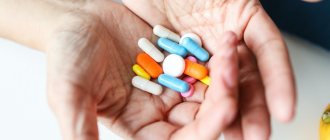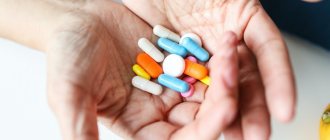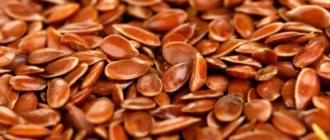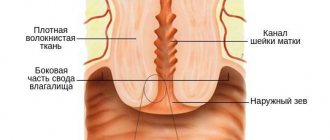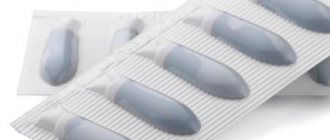The most effective drugs for treating constipation.
October 1, 2022
37691
4.3
3
Content
- Why does constipation occur in adults?
- Constipation symptoms
- How to choose the right laxative
- What types of laxatives are there?
- The most effective laxatives
- Mukofalk
- Forlax
- Guttasil
- Exportal
- Senna leaves
- Guttalax Express
- Duphalac
- Magnesium sulfate
- Regulax Picosulfate
Such a delicate problem as constipation has happened to everyone, and this is the most common disorder of the gastrointestinal tract. Constipation is dangerous to your health, especially if it is chronic. We will talk about the causes of this condition and the best laxatives. Read also The most effective probiotics for the intestines: top 5 How to choose a probiotic and for what problems it is prescribed.
Literature:
- Minushkin O.N. Functional constipation: dynamics of ideas, diagnosis, some therapeutic approaches. Medical advice. 2017; 20:92-95
- Turchina M.S. The use of complex laxatives in the treatment of chronic constipation. Medical advice. 2017; 5:77-79
- Minushkin O.N. Chronic constipation (definition, epidemiology, diagnosis): modern drug therapy. Medical advice. 2015; 13: 100-105
- Plotnikova E.Yu., Krasnov K.A. Constipation needs to be treated. Medical advice. 2018; 14:61-66
- Stepanov Yu.M., Vlasova O.N. et al. Negative effects of laxative abuse in medical practice. Gastroenterology. 2018; 52 (3): 168-173
- Luzina E.V. Safety of using laxatives. Russian medical journal. 2014; 5:41-44
- Parfenov A.I. Three options for the pathogenesis and treatment of chronic constipation. Gastroenterology. 2012; 3:7-19
- Plotnikova E.Yu. Modern ideas about constipation. Attending doctor. 08/2015
- Pharmacology of drugs affecting the function of the digestive organs: textbook by A.N. Leventa, L.B. Kuklina, S.G. Alexandrov, N.V. Verlan, L.O. Gutsol, I.Zh. Seminsky, O.V. Shabaturova; GBOU VPO IGMU of the Ministry of Health of Russia - Irkutsk, 2013. -112 pp. 102-103
- Global practical recommendations of the World Gastroenterological Organization. Probiotics and prebiotics. 2022 - 37s.
- Instructions for use of MICROLAX® microenemas. // Reg. number P N011146/01 // GRLS of the Russian Federation. – URL: https://grls.rosminzdrav.ru/Grls_View_v2.aspx?routingGuid=f052fb31-5426-4bc1-958f-9fce793aa43f&t= (date accessed 05/05/2010).
- Erdes S.I., Matsukatova B.O. and others. Episodic and chronic constipation in children: a step-by-step approach to therapy within the framework of the IV Rome criteria. Pediatrics. Consilium Medicum. 2019; 1:71-76
- Constipation in young children: causes and features of dietary correction O.N. Komarova, A.I. Khavkin (Questions of modern pediatrics. 2014; 13 (1): 114–118
- Clinical recommendations. Constipation in adults (as a manifestation of systemic diseases). Scientific Society of Gastroenterologists of Russia (NOGR), Russian Scientific Medical Society of Therapists (RNSOT) - 2019
- Lactulose: arguments and facts. Yu.O. Shulpekova. EFFECTIVE PHARMACOTHERAPY. Gastroenterology. 5/2011 - pp. 28-71.
- Clinical guidelines: Constipation / Russian Gastroenterological Association. Association of Coloproctologists of Russia - 2022.
- Minushkin O.N. 1, Elizavetina G.A. Forlax in the treatment of chronic constipation: features of therapy for elderly patients / “Breast Cancer” No. 1 - 2006.
Up to contents
Watch in our video which laxative to choose for constipation: tablets, syrup or microenemas
Why does constipation occur in adults?
There are many reasons for constipation (both medical and social). Temporary constipation can occur due to stress, some illness, a certain lifestyle, poor diet, while traveling, or taking certain medications. There are organic and functional causes of constipation.
1. Organic causes of constipation.
Among these reasons are any diseases of the intestines or stomach that prevent normal bowel movements:
- congenital anomalies of intestinal development;
- postoperative period (treatment of the stomach or intestines);
- inflammatory processes in the stomach or intestines;
- tumors of the intestine and surrounding tissues.
2. Functional causes of constipation.
These reasons are not associated with gastrointestinal diseases. Among them:
- emotional disorders (depression, stress, insomnia, conflict situations, phobias and fears, etc.);
- problems with intestinal peristalsis (muscle contraction).
Intestinal motility is disrupted due to insufficient water, poor nutrition, and lack of fiber in the diet. It is plant fiber that increases the volume of feces in the intestines and makes it work properly. Therefore, to prevent constipation, you need to eat vegetables, fruits and grains. Peristalsis is also disrupted if a person leads a sedentary lifestyle - lack of physical activity reduces muscle tone, and intestinal contraction slows down.
- Taking certain medications can also negatively affect intestinal function (reduce its motility). Among the drugs that cause constipation are non-steroidal anti-inflammatory drugs (Diclofenac, Ibuprofen), antispasmodics, antibiotics, drugs for the treatment of fungal infections, etc.
If a person takes laxatives for a long time and then stops, he may also develop constipation due to decreased intestinal tone and the development of dysbiosis.
Chronic constipation negatively affects overall well-being and quality of life in general. Constipation causes abdominal pain, increased gas, loss of appetite and nausea. If you don't go to the toilet for a long time, your risk increases:
- development of dysbacteriosis;
- intoxication (poisoning of the body);
- enterocolitis;
- hemorrhoids;
- problems with the functioning of internal organs;
- the appearance of intestinal polyps and malignant tumors.
Constipation symptoms
In European countries, the Thompson scale is used to diagnose constipation .
If during the course of a year a person regularly experiences at least one of the following symptoms, we can talk about constipation:
- every third or fourth act of defecation requires obvious effort;
- with every third or fourth act of defecation - hard stool;
- the volume of feces per day does not exceed 35 g;
- you have to use aids to go to the toilet;
- dry, fragmented stool;
- stool frequency is less than three times a week.
Causes of constipation
Photos from open sources
How to choose the right laxative
Often, to normalize stool, it is enough to establish proper nutrition. It happens that even a one-time intake of vegetables or fruits can improve intestinal motility. If adding plant fiber to your diet does not help, you need to take laxatives. We recommend that you consult with your doctor about medications for constipation, because many of them have contraindications and side effects. When choosing such drugs, you need to consider some points.
- Type of constipation.
If you are constipated due to poisoning, you need to rid your body of toxins as quickly as possible. Saline laxatives are suitable here. If constipation is chronic, irritant drugs (anthraglycosides) are prescribed. - Age.
Many laxatives are contraindicated for children because they contain toxic substances (they are safe for adults). Well, the form of release of the drug matters. Tablets are not suitable for children; it is better to choose syrup or suppositories. - Pregnancy and breastfeeding.
Most laxatives are not suitable for pregnant or breastfeeding women because they can have a negative effect on the fetus. In extreme cases, lactulose-based constipation medications are allowed during pregnancy. But it is better to carefully read the instructions for a particular drug.
Almost all laxatives should not be taken for a long time, because the body gets used to them. The natural work of the intestines decreases over time, because it adapts to the fact that the drugs “do the work” for it.
Read also How to treat dehydration: 5 solutions for rehydration What drugs for dehydration are most often prescribed by doctors?
What types of laxatives are there?
There are a lot of laxatives in pharmacies that are used in certain cases. Let's figure out which laxative to choose.
- Laxatives that stretch the intestines and irritate its receptors
(salt laxatives also fall into this category). Such drugs begin to act quickly, but their effect is short-lived. Among the natural remedies for constipation are the same vegetables and fruits rich in fiber, which, when entering the intestines, stretch it. Receptors on the intestinal mucosa sense pressure and contraction occurs. Drugs with this effect are prohibited if the patient has intestinal obstruction, renal failure or an “acute abdomen”. - Stool softeners.
This group of laxatives includes various oils (olive, petroleum jelly). Often, such drugs are prescribed to older people whose intestines contract poorly and their stool becomes hard due to a sedentary lifestyle. Oils soften stool and help it pass out easily, enveloping the intestinal mucosa. Oily laxatives are used in preparation for colonoscopy. - Anthraglycosides.
These include natural laxatives (rhubarb root, marshmallow syrup, senna leaves, etc. These products contain special substances that irritate receptors on the intestinal mucosa, which promotes its contraction. Anthraglycoside laxatives are suitable for cleansing the intestines before diagnostic procedures. - Antispasmodics.
For constipation caused by spasms, antispasmodics are prescribed, which relax the intestinal muscles and help stool pass more easily. The spasm is usually caused by stress or poor diet. With such a spasm, a person feels pain, and feces do not move well through the intestines. No-Spa helps well with spastic constipation.
Treatment of constipation requires mandatory adherence to a diet. It is very important to change your diet to include foods that stimulate intestinal contractions. If you fight constipation only with the help of laxatives, the body will get used to them and “forget how” to work on its own. Therefore, nutrition should be a parallel treatment!
Read also How to treat gastritis: 8 best drugs The best drugs for gastritis: reducing acidity, eliminating excess acid and fighting Helicobacter pylori.
Laxatives
Laxatives
- medicines that facilitate bowel movements and are used to treat constipation. There are no clear criteria for choosing any type of laxative, but it is reliably known that monotherapy with one drug has a worse result (Leites Yu.G. et al.). Dynamic observation showed that after 5 years of use only half of the patients responded to the same laxatives, and after 10 years - only 11% (Makhov V.M., Beresneva L.A.).
Laxatives are also used in preparing the colon for instrumental examinations (colonoscopy, anorectal and colonic manometry, X-ray examination), and for surgical interventions that require preliminary cleansing of the intestine (see: “Preparation of the colon for instrumental examinations”).
American Gastroenterological Association on Laxatives
In the brochure “Understanding Constipation” (in Russian: “Constipation. The essence of the problem”) of the American Gastroenterological Association it is written: “Misconceptions about the nature and mechanisms of constipation lead to excessive consumption of laxatives.
Americans spend $725 million on laxatives every year. Many of them are unnecessary and regular use of some stimulant laxatives can lead to drug dependence.” Below is a brief description of laxatives from the brochure mentioned: Stool bulkers
(alimentary fiber). This type of laxative is taken with water. They absorb fluid in the intestines and can make stools softer. These are generally safe laxatives, but they may interfere with the absorption of some medications. Some patients find that this type of laxative does little to improve constipation and that they may increase rumbling and abdominal pain.
Peristalsis stimulants
cause rhythmic contractions of the intestinal muscles. Research suggests that phenolphthalein, a component of some stimulant laxatives, may increase the risk of cancer. The FDA has proposed banning the over-the-counter availability of drugs containing phenolphthalein. Most laxative manufacturers have replaced or plan to replace phenolphthalein with a safe ingredient.
Osmotic laxatives
cause fluid to flow in the colon in a special way, resulting in an increase in the volume of intestinal contents.
This class of medications is used for people with idiopathic constipation (that is, constipation for which the cause is unknown). Diabetic patients should be monitored for electrolyte imbalance when taking osmotic agents. Softeners (plasticizers)
soften the stool and prevent dehydration. These laxatives are often recommended after childbirth or surgery. Plasticizers are recommended for patients who should avoid straining during bowel movements. Long-term use of this class of laxatives can lead to electrolyte imbalance.
Lubricants
the products allow stool to move more easily through the intestines thanks to lubrication. The most common example is mineral oil. Lubricant laxatives usually stimulate bowel movements for eight hours.
Saline laxatives
act like a sponge, drawing fluid into the colon to make stool easier to pass. Saline laxatives are used to treat acute constipation and if there is no intestinal obstruction. With long-term use, they can cause electrolyte imbalances, especially in young children and people with kidney failure.
Chloride channel activators
increase the amount of fluid in the intestines, as well as its motility, thereby improving the passage of stool and reducing the symptoms of constipation. After using these drugs, the doctor should assess the need for their continued use.
Trade names and active ingredients of laxatives described in this directory
- Contact laxatives:
- Bisacodyl
- Castor oil
- Active ingredient: phenolphthalein: Purgen.
- Active ingredient: cascara
- Active ingredient lactulose: Duphalac, Normaze.
- Active ingredient lactitol: Exportal.
- Active ingredient macrogol (polyethylene glycol): Forlax, Fortrans, Lavacol.
- Sorbitol.
- Mannitol (mannitol).
- Active ingredient: sodium phosphate (Fleet Phospho-soda).
- Active ingredient of plantain seed shell (isfagul): Mucofalk, Metamucil.
- Active ingredient: methylcellulose: Citrucel.
- The active substance is calcium polycarbophil.
- Active ingredient: linaclotide
- Active ingredient: plecanatide
- solutions of sodium salts of phosphoric acids: Enema Clean, Fleet Enema
- solution of sodium citrate, sodium lauryl sulfoacetate and sorbitol: Microlax
Patient materials regarding laxative use
- “Constipation (constipation, obstipation)”
- "10 ACG Tips for Constipation and Fecal Incontinence"
- American Gastroenterological Association brochure “Constipation. The crux of the problem." Part I and Part II.
The GastroScan.ru website contains materials for patients on various aspects of gastroenterology:
- “Advice from doctors” in the “Patients” section of the site
- “Popular gastroenterology” in the “Literature” section
- “Popular gastroenterology” in the “Video” section
Some resources for healthcare professionals
Clinical and methodological recommendations, articles
- Ivashkin V.T., Maev I.V., Sheptulin A.A. and others. Clinical recommendations of the Russian State Administration for the diagnosis and treatment of adult patients with chronic constipation // Ros journal. gastroenterol., hepatol., coloproctol. – 2022. – 27(3). pp. 75-83.
- Parfenov A.I., Indeikina L.H., Belyaeva A.A. etc. Chronic constipation. Methodological recommendations // GBUZ Moscow. wedge. scientific Center TsNIIG. - M.: Prima Print, 2016. - 52 p.
- Luzina E.V., Tomina E.A., Zhilina A.A., Lareva N.V., Fedorova L.V. Treatment of constipation in the practice of a therapist / Materials of the 1st Congress of Therapists of the Trans-Baikal Territory. - Chita: RIC ChSMA, 2013. - P. 38-42.
- Vyalov S.S. Chronic constipation: etiology and treatment options // Doctor.Ru. Gastroenterology. 2015. No. 12 (113). pp. 42-49.
On the website GastroScan.ru in the literature catalog there are sections “Laxatives” and “Constipation and Diarrhea”, containing professional medical articles relating to laxatives and their use for constipation.
Video
Still from the video “Komarov O.N. Features of the gastrointestinal tract in patients with SMA. Basic violations and their correction.”
Appendix 1. Classification of laxatives according to ATC
In the Anatomical Therapeutic Chemical Classification (ATC) there is a section “A06 Laxatives”, which includes one, identical in name to the section, subsection A06A “Laxatives”, which, in turn, includes the following groups and drugs:
A06AA Emollient drugs
A06AA01 Liquid paraffin A06AA02 Sodium docusate A06AA51 Liquid paraffin in combination with other drugs
A06AB Contact laxatives
A06AB01 Acetphenolysatin A06AB02 Bisacodyl A06AB03 Danthrone A06AB04 Phenolphthalein A06AB05 Castor oil A06AB06 Senna glycosides A06AB07 Cascara A06AB0 8 Sodium picosulfate A06AB09 Bisoxatine A06AB20 Combination of contact laxatives A06AB30 Combination of contact laxatives with belladonna alkaloids A06AB52 Bisacodyl in combination with other drugs A06AB53 Danthrone in combination with other drugs A06AB56 Senna glycosides in combination with other drugs A06AB57 Cascara in combination with other drugs A06AB58 Sodium picosulfate in combination with other drugs
A06AC Laxatives that increase the volume of intestinal contents
A06AC01 Isphagula (plantain oval or flea beetle) seeds) A06AC02 Etulose A06AC03 Sterculia A06AC05 Flax seed A06AC06 Methylcellulose A06AC07 Trititium (wheat fiber) A06AC08 Calcium polycarbophil A06AC51 Isphagula in combination with other drugs A06AC53 Sterculia in combination with other drugs A06AC55 Flax seed in combination with other drugs A 06AD Osmotic
laxatives
A06AD01 Magnesium carbonate A06AD02 Magnesium oxide A06AD03 Magnesium peroxide A06AD04 Magnesium sulfate A06AD10 Combination of mineral salts A06AD11 Lactulose A06AD12 Lactitol A06AD13 Sodium sulfate A06AD14 Pentaerythrityl tetranitrate A06AD15 Macrogol A06AD16 Mannitol A06AD17 Sodium phosphate A06AD18 Sorbitol A 06AD19 Magnesium citrate A06AD21 Sodium tartrate A06AD61 Lactulose in combination with other drugs A06AD65 Macrogol in combination with other drugs
A06AG Laxatives in enemas
A06AG01 Sodium phosphate A06AG02 Bisacodyl A06AG03 Dantnon, including in combination with other drugs A06AG04 Glycerol A06AG06 Oil A06AG07 Sorbitol A06AG10 Sodium docusate, including in combination with other drugs A06AG11 Lauryl sulfate, including in combination with other drugs A06AG20 Combined laxatives
A06AH Peripheral opioid receptor antagonists
A06AH01 Methylnaltrexone bromide A06AH02 Alvimopan A06AH03 Naloxegol A06AH04 Naloxone A06AH05 Naldemedine
A06AX Other laxatives
A06AX01 Glycerol A06AX02 Carbon dioxide-forming drugs A06AX03 Lubi proston A06AX04 Linaclotide A06AX05 Prucalopride A06AX06 Tegaserod A06AX07 Plecanatide Back to section
Mukofalk
A German herbal laxative (psyllium husk) is sold in powder form from which a suspension is prepared. This is convenient for those who have problems swallowing. Plantain seeds absorb a lot of water, which has a positive effect on constipation. In addition to plantain seeds, “Mukofalk” contains a lot of plant mucus, which ensures easy passage of feces. This laxative is prescribed to children from 12 years of age, and is also used in the complex treatment of high cholesterol. Among the advantages of the drug are a pleasant orange taste, excellent tolerability, long-lasting effect and the possibility of use during pregnancy. There are some side effects that you should definitely read in the instructions.
Mukofalk
Dr. Falk Pharma, Germany
- constipation (including during pregnancy);
- anal fissures; - haemorrhoids; - postoperative period during interventions in the anorectal area (in order to create a softer stool consistency); - functional diarrhea; - irritable bowel syndrome. from 421
1188
- Like
- Write a review
Osmotic laxatives
Their action is based on increasing the water content in feces and accelerating their movement through the intestines. Such drugs contain either sugars, salts, or short carbohydrate chains. If you overdo it with saline laxatives, too much water will enter the intestines, which means diarrhea may occur.3
Please note that some osmotic laxatives can cause severe gas when taken in high doses. But osmotic laxatives are approved for use in pregnant women if they experience periodic problems with stool.3
Forlax
A synthetic laxative whose active ingredient is macrogol. Forlax is prescribed for the symptomatic treatment of constipation in adults and children over 8 years of age. Doctors consider this laxative to be as safe as possible, but it is better to familiarize yourself with the list of contraindications. Among them: Crohn's disease, ulcerative colitis, gastrointestinal perforation, intestinal obstruction (or suspicion of it), abdominal pain for unknown reasons, hypersensitivity to the main or auxiliary substances. The laxative effect after taking Forlax occurs within 24-48 hours. The drug is not suitable for emergency relief from constipation. Forlax is considered one of the best laxatives. The active ingredient of the drug retains water in the intestines, which causes its walls to stretch and the urge to evacuate. This is a very mild drug that does not stimulate frequent urge to go to the toilet, so you do not need to be at home during treatment. “Forlax” for constipation is approved for pregnant women, there is a dosage for children from 6 months, addiction does not develop when taking it, the body does not lose electrolytes, and there are no side effects.
Forlax
IPSEN (Bofur Ipsen), Ukraine
Forlax powder helps restore normal intestinal motility in young children.
The duration of the intestinal “training” effect ranges from 1 to 6 months and depends on the duration of taking the drug. from 137
782
- Like
- Write a review
Drugs that increase the volume of intestinal contents
Bulk laxatives retain water, swell and stretch the intestinal walls with increased volume. Excessive distension triggers peristalsis and bowel movements are accelerated17.
This group of drugs includes3,16:
- alimentary fiber;
- osmotic laxatives - macrogol, lactulose, salts.
The listed medications are difficult to digest, and some are not digested at all, so they are practically not absorbed through the mucous membrane into the blood17.
Alimentary fiber
Dietary fiber (fiber) is found in bran, seaweed, psyllium seed hulls and flax14. They are also found in vegetables and fruits. Fiber can swell in the intestinal lumen, increasing the mass of feces, which mechanically irritates the intestinal wall3,7. But the effect does not appear immediately, but after 10 days, sometimes you have to wait up to 3 weeks for results6.
To get a laxative effect when using dietary fiber, do not forget to drink enough water3 - 1.5-2 liters per day17, because to increase the volume of feces, fiber must absorb a lot of liquid3,7.
When choosing between wheat bran and psyllium, you should keep in mind that wheat bran can cause flatulence7,16. Therefore, elderly people are advised to use psyllium seeds, which are better tolerated16.
Macrogol
Products based on polyethylene glycol (macrogol) are poorly absorbed substances6,9. Thanks to this property, they are able to retain fluid in the intestinal lumen7,9.
Macrogol does not cause dehydration, but only slows down water absorption14. After taking a laxative, the stool becomes thinner, its consistency improves, and the frequency of bowel movements increases7.
The disadvantage of macrogol is a rather slowly developing effect and intestinal hypotension1, and the main side effect is potentiation of fecal incontinence7. According to the instructions, the recommended duration of taking macrogol is up to 14 days8.
Saline laxatives
Concentrated salts - magnesium sulfate, sodium sulfate, Carlsbad salt8, 9 - act at the level of the small intestine and increase the osmotic pressure in it17. On the one hand, this attracts fluid into the intestinal lumen1,4,5,6,7, and on the other, it retains water in it7,8.
Under the influence of salts, feces become liquid, like diarrhea, and are easily excreted,8,17.
But it is precisely because of severe diarrhea that salt laxatives are not suitable for long-term use. With the constant release of loose stools, imbalances in water and ions may occur17. Also, these drugs are not recommended for people with kidney and heart diseases, because salts can be absorbed into the bloodstream in minimal quantities and retain water in the body14. When using Carlsbad salt, a problem for patients may be its unpleasant taste8.
Lactulose
Lactulose has a laxative effect not directly, but with the help of beneficial bacteria. Using it as food10, 13, bifidobacteria and lactobacilli that live in the intestines secrete substances that act like osmotic laxatives7,10,13,17. But at the same time, severe diarrhea does not occur, because lactulose “works” exclusively in the large intestine15,17.
The laxative effect of lactulose develops gradually:
- with a single dose every 24-48 hours;
- with systematic - after 2-4 hours15.
Since lactulose is not digested, it is practically not absorbed and has no systemic side effects15. Sometimes, if the dose is incorrectly selected, bloating may occur while using the drug15,17.
Up to contents
Guttasil
Guttasil tablets have a mild laxative effect, do not cause intestinal spasms, and are prescribed to adults and children over 10 years of age. The active substance of the drug stimulates the nerve endings of the intestine, as a result of which its peristalsis improves. Doctors often prescribe Guttasil for irritable bowel syndrome. Among the advantages of the drug: it helps to get rid of constipation due to errors in diet, softens stool well, and is suitable for constipation caused by taking medications and problems with the gallbladder. But if you exceed the dosage of Guttasil, severe abdominal pain is possible.
Guttasil
PAK "Farmak", Ukraine
Constipation caused by hypotension and sluggish peristalsis of the colon.
Regulation of stool for hemorrhoids, proctitis, anal fissures. Preparation for surgical operations, instrumental and x-ray examinations. from 131
770
- Like
- Write a review
Stimulant laxatives
Stimulants of peristalsis (intestinal contractions) are irritating substances that act on nerve endings in the intestinal mucosa 3,4,5,6,7.
Medicines with an irritating effect can act on different parts of the digestive tract3,4,5:
- the small intestine is the zone of action of castor oil and laxative resins;
- The activity of the colon is increased by preparations of senna, buckthorn, rhubarb, sulfur, sodium picosulfate and diphenylmethane derivatives.
They also secrete drugs that are converted into an active form under the influence of intestinal enzymes, so they “work” in both the small and large intestines3,4,5,6.
It is important to remember that if you abuse stimulant laxatives, side effects are possible:
- Diarrhea with cramping pain in the abdomen . Due to diarrhea, the body loses the potassium, sodium and chloride ions it needs. With their deficiency, general weakness is a concern, and due to an imbalance of ions, there is a likelihood of arrhythmias and a decrease in blood pressure5,16.
- The "lazy gut" phenomenon . “Lazy” is a colon that has become an enlarged tube that has lost its tone. Without taking large doses of laxatives, it is unable to contract and move stool. This often happens if the drug accumulates in the colon mucosa and its nerve plexuses, and then destroys the smooth muscles that push feces1,5,16.
Lazy bowel syndrome is manifested by the progression of constipation, which is difficult to correct2,5. Due to rapid addiction7, peristalsis stimulants are not recommended for use for more than 14 days5,16.
Up to contents
Exportal
Lactitol is a hydrocarbon alcohol that is obtained from lactose (milk sugar). This alcohol destroys putrefactive bacteria in the intestines and stimulates the growth of acidophilic (beneficial) bacteria. It is this alcohol that is contained in the drug “Exportal”, which is prescribed not only for constipation, but also for preparation for intestinal examinations, operations, intestinal dysbiosis, hepatic encephalopathy, increased levels of ammonia in the blood, etc. Among the contraindications: galactosemia, obstruction intestines, organic lesions of the gastrointestinal tract, rectal bleeding, abdominal pain of unknown origin, intolerance to the active substance of the drug. After taking Exportal, the laxative effect usually occurs within a day. If the drug is used for the first time, the effect may occur later - after two to three days. Doctors warn that sometimes flatulence and abdominal discomfort are possible during treatment with this laxative. But this quickly passes as soon as the body gets used to the drug.
Exportal
Ellara LLC, Russia
- constipation;
- the need to regulate stool for medical purposes (cleansing the intestines in preparation for endoscopic and x-ray examinations, surgical interventions on the rectum, anal sphincter and the area adjacent to it); — intestinal dysbiosis; - hepatic encephalopathy, hepatic coma and precoma, hyperammonemia. from 199
5.0 5 reviews
1937
- Like
- Write a review
List of drugs
Pharmacological enterprises produce three types of osmotic drugs that have a laxative effect on the body. Pharmacies offer a large number of such drugs.
Table “Osmotic laxatives”:
| group | Name | properties | contraindications | by-effect |
| salt preparations |
|
|
|
|
| prebiotics |
|
| allergic reaction; | flatulence; |
| Macrogol and its analogues |
|
| hypersensitivity to the substances included in the composition; |
|
It is recommended to consult a doctor before starting to take medications.
Senna leaves
Perhaps this is the most natural laxative on this list. Senna leaves are the most harmless laxative that irritates the intestinal mucosa. Senna leaves, in addition to stimulating contractions of the intestinal muscles, also improve its normal functioning. Laxatives serve as an excellent prevention of constipation in the future. Senna leaves are prescribed for adults and children over 12 years of age as a remedy for constipation. By the way, this particular medicine is often used for weight loss, but it is harmful to the body. Among the advantages of senna are the absence of an addictive effect, a mild effect on the intestines, an affordable price, a neutral taste, and the ability to combine the drug with other drugs. But overdose must be avoided.
Senna leaves
Lek S+, Russia; OJSC Krasnogorskleksredstva, Russia
Senna leaves are a herbal laxative.
Sena leaves contain flavonoids, anthraglycosides (senosidine A and B, rhein, aloe-emodin), organic acids, and resinous substances. This complex of biologically active substances has a mild laxative effect. The laxative effect of a decoction of Sena leaves appears 6-10 hours after administration and is due to anthraglycosides, which enhance the motor function of the large intestine. from 12
5.0 1 review
1086
- Like
- Write a review
Guttalax Express
This laxative produced in France has the fastest effect. The active substance of rectal suppositories is bisacodyl. Guttalax Express begins to act within 20 minutes after administration, so the drug is considered ideal for the emergency treatment of constipation in bedridden patients and those after surgery. This laxative can also be used in children over 10 years of age. Among the advantages: does not affect digestion, can be used during breastfeeding, excellent prevention of hemorrhoids, very fast action. Disadvantages: if used for a long time, addiction may develop; Guttalax Express suppositories must be stored in the refrigerator.
Guttalax Express
Institute de Angeli, Italy
Guttalax Express is a local laxative from the group of diphenylmethane derivatives with a slight antiresorptive effect.
As a laxative in the following cases: - constipation caused by atony and hypotension of the colon (including in old age, in bedridden patients, after operations, after childbirth and during lactation); - constipation caused by taking medications; - to regulate stool in case of hemorrhoids, proctitis, anal fissures (to soften the consistency of stool); - gallbladder diseases, irritable bowel syndrome with a predominance of constipation; - constipation caused by intestinal dysbiosis and diet disorders. from 147
5.0 1 review
1238
- Like
- Write a review
Synthetic laxatives in the treatment of chronic constipation
The rapid urbanization of society, along with numerous advantages, has brought with it a whole bunch of “diseases of civilization,” among which diseases of the digestive system are far from the least important. Most of these diseases are not fatal, but the number of patients suffering from one type of digestive disorder or another is in the tens of millions. Among the various complaints that patients often present to a gastroenterologist, there is one that can be classified as an independent syndrome - impaired bowel movement, in particular constipation. Currently, the problem of chronic constipation is becoming increasingly urgent. Constant stress, the urbanization of our lives and the associated physical inactivity are to blame for this. In highly developed countries, constipation currently affects up to 10% of the adult population, and women experience it three times more often than men. Chronic constipation is diagnosed in approximately 3% of the young population, 8% of the middle-aged population and about 20% of the elderly.
In the introduction to an article on bowel movements in the general population, Heaton et al. O. The topic of normal bowel function is traditionally perceived as a sensitive area, closed for discussion.
For a long time, constipation was defined as prolonged retention of contents in the intestinal tract or delayed bowel movement. There are different points of view on the nature and characteristics of constipation. A number of experts believe that bowel movements should be as regular as urination. Other authors argue that since the colon is a storage reservoir, defecation should occur as fecal matter accumulates in the colon and a reflex urge appears. However, the frequency of bowel movements may be subjectively different. There is not necessarily a correlation between the frequency of bowel movements and the diagnosis of constipation. Aspects such as difficulties with evacuation, hard stools, a feeling of incomplete emptying of the rectum or pain are of great importance.
Data collected by an international research group have been published, according to which a diagnosis of constipation can only be made if the following symptoms are observed for at least 25% of the time during a period of 12 months or more without the use of laxatives:
- defecation requires a certain amount of tension;
- stools are hard or lumpy;
- feeling of incomplete emptying of the rectum;
- bowel movements occur at a frequency of two or fewer times per week.
This purely scientific definition often has little in common with daily medical practice and may not reflect the patient’s subjective feelings. Daily retention of stool due to the morning rush, constant stress at work, and a sedentary lifestyle leads to constant suppression of the act of defecation, the intestines begin to “be lazy,” which inevitably entails the disappearance of the correct reflex.
Constipation is not a disease, but only a sign or symptom. To a certain extent, any form of constipation is a consequence of a pathological condition. It should be borne in mind that with an increase in the well-being of the population, improved nutrition (consumption of refined foods), and a decrease in physical activity and activity, the motor activity of the colon decreases, which inevitably leads to constipation. Neurological (asthenoneurotic conditions) and endocrinological (hypothyroidism) factors, various diseases of the colon and other organs can contribute to the development of intestinal dyskinesia and constipation. There are three forms of constipation:
- disturbances of the tone or motility of the colon or the muscles of the pelvic diaphragm, as well as constipation, the development of which is due to psychological reasons (so-called idiopathic constipation);
- constipation caused by a mechanical obstruction (obstruction);
- drug-induced constipation.
According to Schettler G (Hrsg) 1987, typical causes of constipation are as follows:
- mechanical - weakness of the abdominal muscles;
- gastrointestinal - malabsorption, irritable bowel syndrome, intestinal stenosis, diverticulosis;
- neurogenic - Hirschsprung's disease, spinal cord diseases, Parkinson's disease;
- metabolic-endocrinological - diabetes mellitus, porphyria, hypocalcemia;
- psychogenic - suppression of the urge to defecate;
- medicinal.
The significance in the pathogenesis of constipation of factors such as consumption of fiber in food, intake of sufficient amounts of fluid and physical exercise has not been specifically studied, however, these factors have long been considered fundamental, and correction of their deficiency underlies most treatment methods. Recommendations to increase the intake of fluids and foods with a high fiber content are often associated with changes in habitual eating habits; these measures often turn out to be insufficient or temporary. As a result, patients often begin to take laxatives, either as prescribed by a doctor, or, much more often, on their own initiative.
Available laxatives are divided into separate groups, depending on their mechanisms of action:
- softening feces (liquid paraffin);
- agents that increase the volume of intestinal contents (bran, seeds, synthetic substances);
- laxatives that increase osmotic pressure (non-absorbable salts and polyhydric alcohols);
- lactulose;
- irritant laxatives (anthraquinones and diphenylmethane derivatives);
- drugs that enhance intestinal motor function (prokinetics).
Irritant laxatives are precisely those medications that are particularly abused. These include a number of substances of plant origin, the active principles of which are anthraglycosides (glycosides containing anthraquinone derivatives) - preparations of rhubarb root, buckthorn bark, joster fruit, senna leaves, as well as synthesized substances similar in structure and action to anthraglycosides - phenolphthalein and isafenin (diphenylmethane derivatives).
Thus, for the treatment of constipation, there is a wide range of therapeutic options from which the safest and most effective should be selected.
From this point of view, the group of saline or bulk laxatives looks more promising. Drugs in this group act not only on the large intestine, but also on the small intestine, preventing the absorption of water and, thus, creating a kind of hydrodynamic piston that pushes the semi-liquid mass of intestinal contents out.
An example of such drugs are drugs where the synthetic drug macrogol-4000, based on high-molecular linear chains of polyethylene glycol, is used as a bulk-forming component. Due to its high molecular weight and structural chain features, macrogol-4000 forms hydrogen bonds with water molecules in the intestinal lumen, increasing the osmotic pressure by more than ten times, which allows it to retain a significant amount of liquid around itself. Thus, the liquid content in feces increases, they become softer in consistency, which facilitates the act of defecation. In the process of binding water, polyethylene glycol molecules “swell,” as it were, which is responsible for the additional effect of increasing volume. One macrogol-4000 molecule can bind up to ten water molecules. This only applies to the fraction of water that can be reabsorbed in the colon (9-10 liters per day). Considering the precisely calculated dosage of the drug necessary to achieve a therapeutic effect, this does not lead to dehydration of the body, but only slightly reduces the absorption of water from the colon. Due to its high molecular weight, macrogol-4000 is not absorbed, is not metabolized in the gastrointestinal tract and is not absorbed, which is especially important for diseases associated with metabolic disorders. The absence of electrolytes in the composition of the drug makes it neutral in relation to the acid-base balance of the intestine and does not affect the pH of feces. The laxative effect occurs regardless of the bacterial flora of the intestine, which allows maintaining its normal physiology.
Other laxatives of significant interest in the complex treatment of constipation are preparations based on lactulose, such as Duphalac. The mechanism of action of lactulose-based drugs in patients suffering from constipation has three main components.
- Lactulose (a disaccharide) does not occur in nature, and the human body naturally does not have enzymes capable of hydrolyzing it to the corresponding monosaccharides (galactose and fructose). In this regard, lactulose passes through the gastrointestinal tract and reaches the colon unchanged, almost without being absorbed. Only 0.25-2.0% of the administered drug is absorbed unchanged in the small intestine (possibly through the process of passive diffusion). This percentage may be slightly higher in a number of pathological processes in the intestines - Crohn's disease, celiac enteropathy, as well as with the simultaneous use of hyperosmolar solutions. Reaching the large intestine unchanged, lactulose breaks down into short-chain fatty acids (lactic, acetic, propionic and butyric) during bacterial decomposition. This lowers the pH of the colon contents and stimulates peristalsis.
- The decomposition of lactulose to monosaccharides and then to low molecular weight organic acids known as short chain fatty acids (SCFAs) also increases the osmotic pressure in the intestinal lumen. Dose-dependent acceleration of the movement of colonic contents occurs due to an increase in the volume of chyme, which is caused by water retention within the intestinal lumen and increased intestinal motility.
- Lactulose is a source of energy for saccharolytic bacteria, so it is possible to increase their biomass in the intestine, which was confirmed by studies conducted on healthy volunteers. As a result, it was found that the number of bifidobacteria increases by three orders of magnitude from 109 to 1012, and therefore the drug can be considered not only as a laxative, but also as a prebiotic, restoring the intestinal biocenosis.
By increasing the osmotic pressure in the intestinal lumen by approximately four times, lactulose has a less pronounced osmotic effect than non-absorbable salts. The combination of two moderately potent physiological mechanisms produces a clinical effect comparable to the effects of other laxatives. Since intestinal bacteria metabolize lactulose very quickly, the drug begins to act within a few minutes after the active substance enters the colon. When taking the drug on an empty stomach, the effect can be observed within 1-2 hours.
Lactulose is a source of carbohydrates favorable for lactate-producing bacteria (especially various species of Bifidobacterium and Lactobacillus), which can significantly increase biomass due to it. Ballongue et al demonstrated a marked displacement of proteolytic bacteria (Clostridium and Bacteroides) in vitro by lactulose.
Changes in bacterial metabolism depend on two main factors: firstly, on lactulose itself, which is a rich source of energy and carbohydrates, and secondly, on acidification due to short-chain fatty acids, which are products of bacterial biotransformation.
It is necessary to dwell on the potential uses of lactulose. Today, the fact that intestinal flora and the products of its metabolism can have an extremely strong effect on human health is no longer in dispute. In the presence of lactulose, bifidobacteria are able to especially powerfully inhibit fungi of the genus Candida and statistically significantly reduce the time of bacterial excretion in acute salmonellosis. Also, good results were obtained for infections of the gastrointestinal tract caused by other pathogens: clinically significant improvement was observed in infections caused by Yersinia, as well as in chronic carriers of Shigella.
Lactulose is often confused with lactose, considering that its use is contraindicated in diabetes mellitus. However, the daily dose of lactulose (20 g of powder) contains only about 0.1 XE (bread unit) - this is due to the fact that lactulose is not adsorbed by the body.
A large number of serious studies have been devoted to the use of lactulose in the treatment of portosystemic encephalopathy (PSE), so this issue was not covered in this work.
Thus, advances in the development of organic chemistry, in particular in the field of hydrocarbon synthesis, have made it possible to create synthetic laxatives, which include the drugs described above. They are practically devoid of pronounced side effects, so characteristic of traditional laxatives, especially of herbal origin. It should be noted that many people, especially older people, are prejudiced against “chemistry”, preferring “herbs” or herbal preparations. This article is intended to reveal the capabilities of new tools as fully as possible. In addition, many doctors will find the information presented useful.
in everyday work, since despite the fact that lactulose was synthesized more than 60 years ago (1929), it has not yet received widespread use in medical practice in our country.
Glaxenna is a mild, effective laxative of plant origin (a complex of anthraglycosides from the leaves of senna (cassia) acufolia and angustifolia). The laxative effect is due to the effect on the receptors of the intestinal mucosa and a reflex increase in peristalsis, which leads to faster bowel movements and restoration of the normal functioning of the gastrointestinal tract.
Indications for the use of Glaxenna are constipation caused by hypotension and atony of the gastrointestinal tract, sluggish peristalsis of the colon, including after surgery and childbirth. The use of glacenna helps regulate stool in cases of hemorrhoids, proctitis, and anal fissures. It is possible to use the drug during preparation for x-ray and ultrasound examinations and surgical operations.
Glaxenna is usually taken once a day in the evening before bed, the effect occurs 6-12 hours after taking one or two tablets.
M. V. Belyaev , Candidate of Medical Sciences Civil Aviation Hospital, Moscow
Duphalac
This combined laxative is based on lactulose. Duphalac not only relieves constipation, but also removes toxins from the body and reduces the number of pathogenic organisms in the intestines. Duphalac can be taken when there is an “overdose” of protein foods in the diet (to avoid the processes of putrefaction in the intestines). Among the advantages of this drug are the possibility of taking it from birth, it is not prohibited for inflammatory processes in the intestines, there are a minimum of contraindications, it is indicated for dysbacteriosis, diabetes, pregnancy, and is suitable for people with severe liver diseases.
Duphalac
Solvay Pharma, Germany
Constipation: regulation of the physiological rhythm of colon emptying;
softening of stool for medical purposes (for hemorrhoids, conditions after surgery on the colon and in the anal area); hepatic encephalopathy in adults: treatment and prevention of hepatic coma or precoma. from 248
1.0 1 review
3640
- Like
- Write a review
Magnesium sulfate
Magnesium sulfate is a strong saline laxative that promotes the accumulation of water in the intestines, causing muscles to reflexively contract. Magnesium sulfate also has a choleretic effect, which stimulates digestion and prevents constipation due to dietary errors. The advantages of this laxative: the effect after taking lasts all day, blood pressure decreases slightly, swelling decreases, and sleep improves. Among the obvious disadvantages is an unpleasant taste.
Magnesium sulfate
YuzhPharm, Russia
Constipation, bowel cleansing before diagnostic procedures.
Poisoning with salts of heavy metals (mercury, arsenic, tetraethyl lead, barium). from 12
1084
- Like
- Write a review
Regulax Picosulfate
A popular German laxative in drops, which also helps with complicated constipation: hemorrhoids, rectal fissures, fistulas - all cases where constipation only worsens the patient’s condition. Regulax Picosulfate is prescribed to older people and in the second and third trimesters of pregnancy (but only once). Among the advantages of the drug: mild action, low price, acceptable taste, many positive reviews from patients.
Regulax Picosulfate
Meuselbach-Pharma, Germany
- atonic constipation;
- regulation of stool (hemorrhoids, proctitis, anal fissures); — preparation for surgical operations, instrumental and x-ray examinations. from 190
487
- Like
- Write a review
